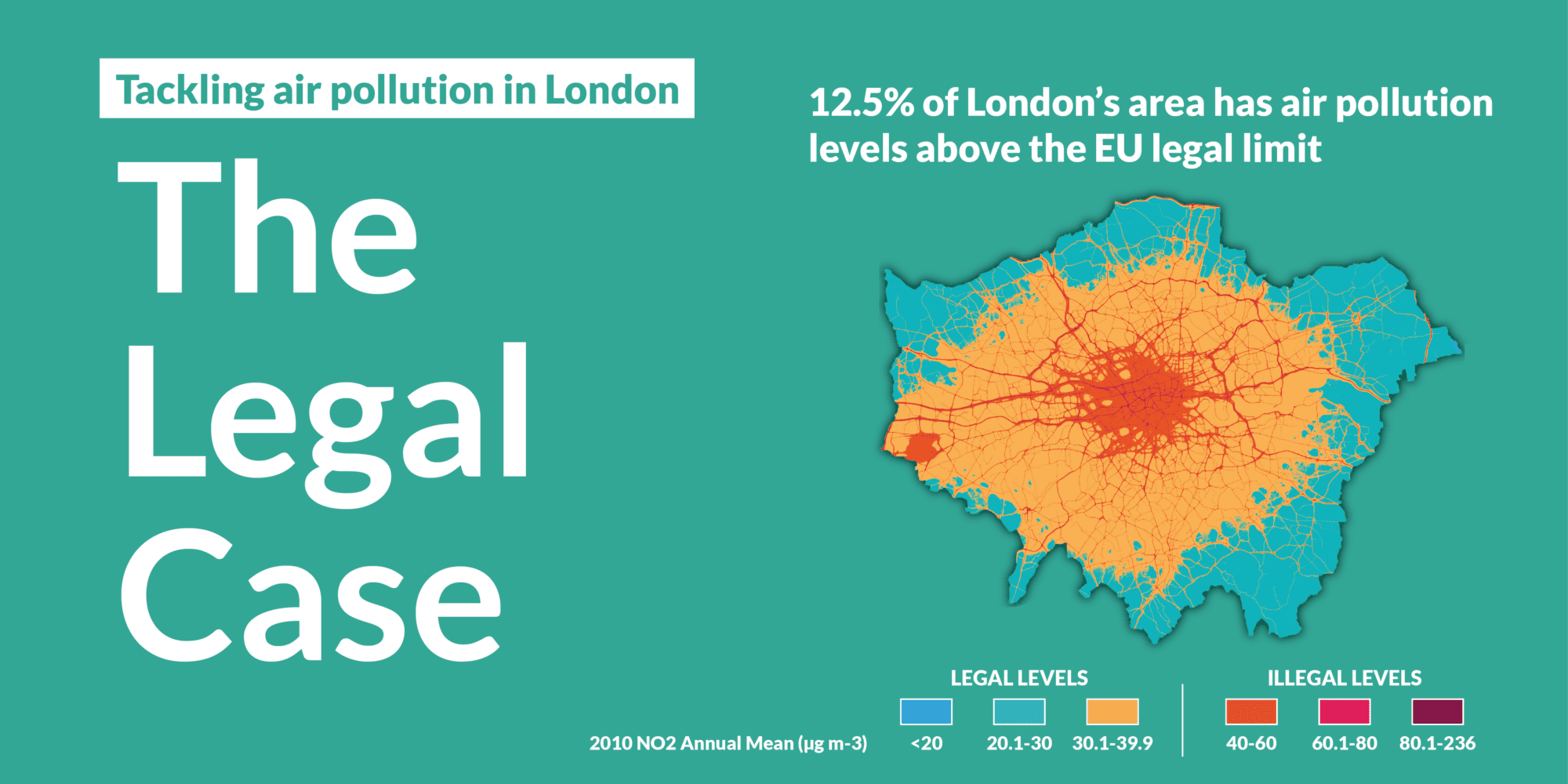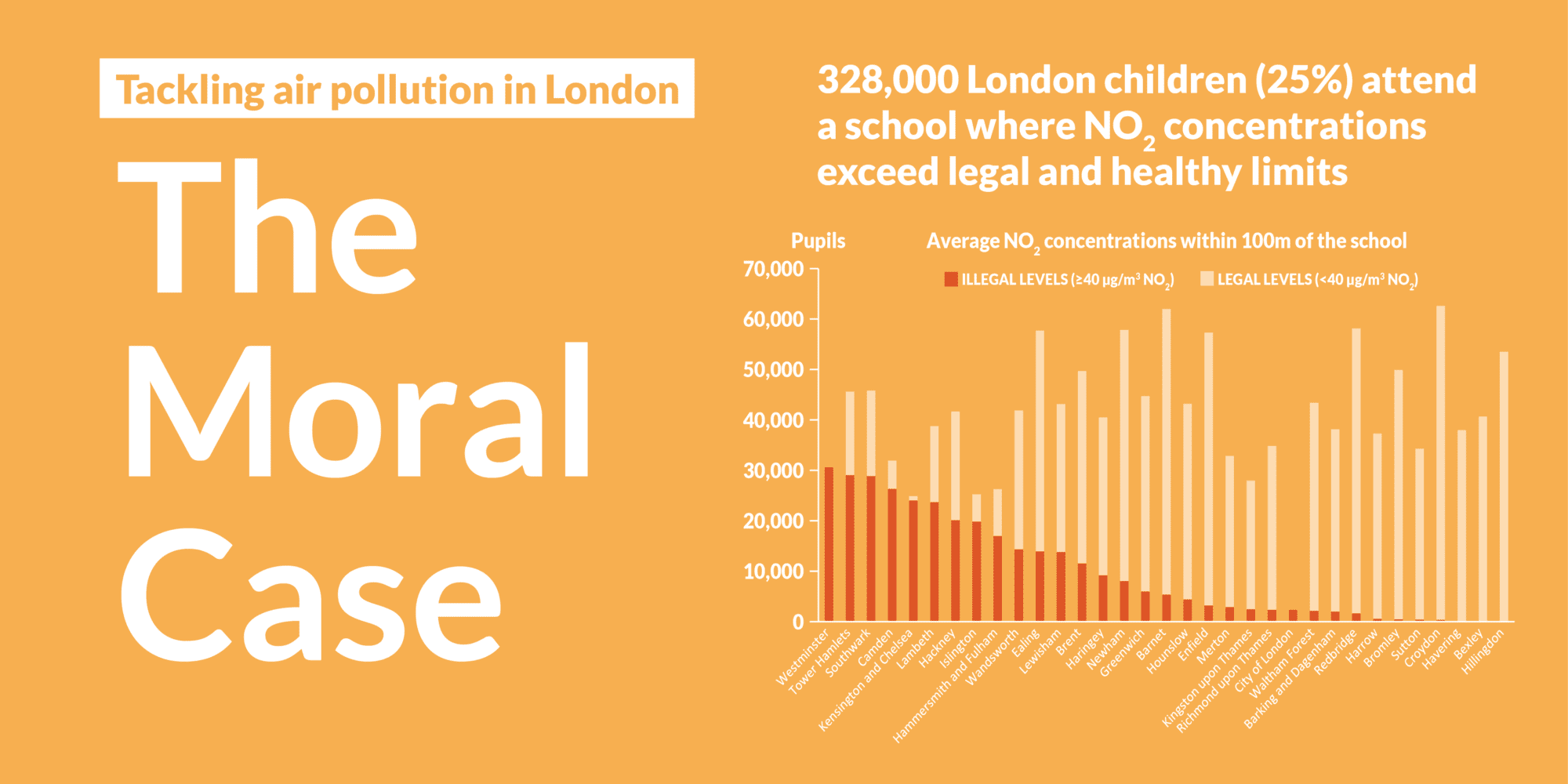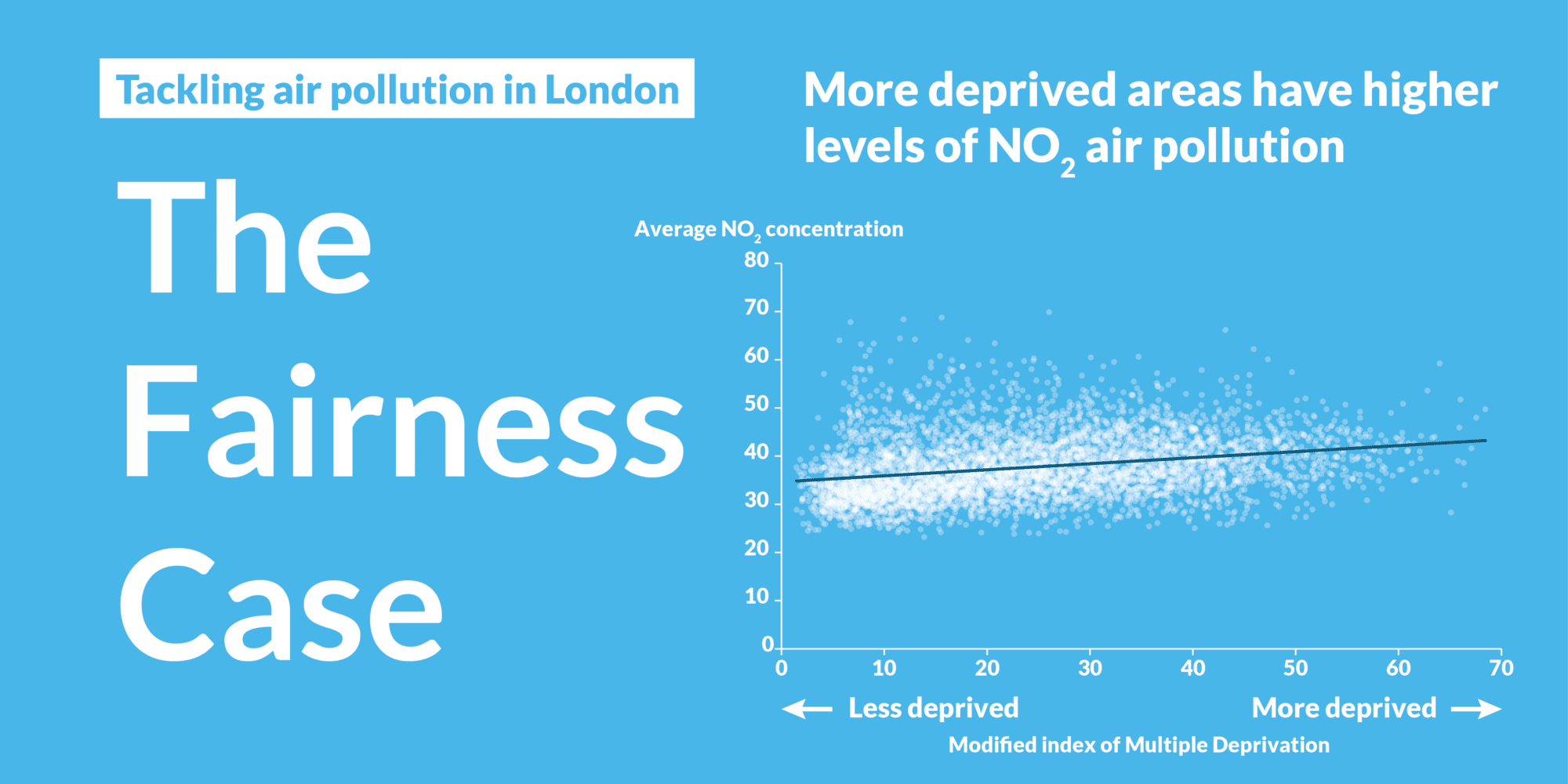Yesterday we released a new report, Up In the Air, on London’s air pollution crisis. The report highlighted the scale of the challenge in cleaning up London’s air. This blog summarises the case for tackling air pollution in the Capital, on legal, moral, health and fairness grounds.
1. The Legal Case: 1/8 of London’s area has air pollution which exceeds legal limits

Air quality is governed by European and UK legislation, which sets the limit for concentrations of certain pollutants. Modelling shows that 1/8th of the area of London (the bit in dark orange in the map above) was in breach of pollution limits for Nitrogen Dioxide (NO2) in 2010. More than 44% of London’s workday population is contained within this zone. The most polluted parts of London experience levels of pollution up to four times the legal limit.
Failure to comply with emissions limits could result in Europe imposing fines of hundreds of millions of pounds, which will ultimately have to be paid for by the GLA and/or London Boroughs.
2. The Moral Case: 328,000 school children are exposed to illegal and unhealthy levels of air pollution

Children are particularly susceptible to the effects of air pollution. Exposure to high levels of NO2 can exacerbate asthma conditions and reduce resistance to respiratory infections. We have calculated that 328,000 schoolchildren are exposed to levels of NO2 pollution which are above the legal and healthy limit, representing 25% of all schoolchildren in Greater London. 979 of the 3,161 schools in London are affected (this includes all primary and secondary schools, including independent schools).
3. The Health Case: air pollution significantly reduces life expectancy

Research by King’s College London has calculated that exposure to NO2 pollution reduces female life expectancy by up to 15.5 months (17 months for males), on average across the population of London. In addition, exposure to fine particles reduces female average life expectancy by 9 months (9.5 months for males).
Overall, the total mortality impact of NO2 and particulate pollution in London in 2010 was estimated as up to 141,000 life years lost, or the equivalent to up to 9,400 deaths. The economic value associated with this mortality burden is estimated at £3.7 billion (in 2010). Air pollution was responsible for an estimated 3,200 hospital admissions in London in 2010.
4. The Fairness Case: deprived parts of London are disproportionately affected by air pollution

Pollution levels vary considerably across London. Our analysis shows that there is a relationship between air quality and inequality – with more deprived parts of London generally experiencing higher levels of NO2 pollution. This relationship is stronger in Outer London Boroughs, whilst Inner London boroughs experience high levels of air pollution across both more and less deprived neighbourhoods.
The case for further action to address London’s air pollution crisis is clear. We will be producing a second report on this issue, to be published in the spring, which will consider potential policies to improve air quality in London.

